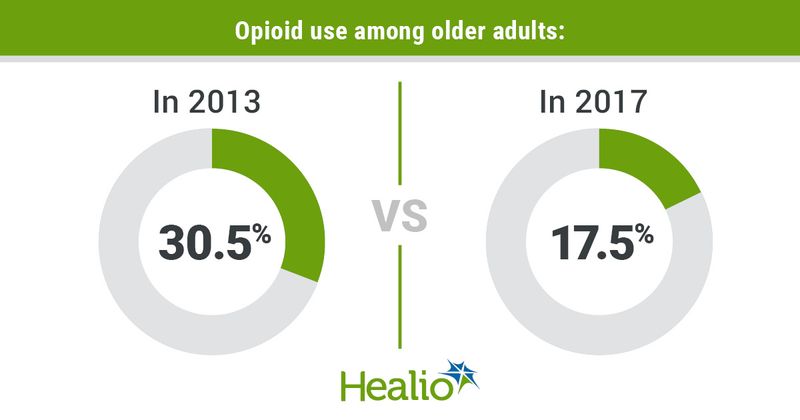Opioid use declines among elderly, but still ‘substantial’
Opioid use among older Medicare beneficiaries dropped during a recent 4-year period, but a “substantial” number of these individuals were considered chronic and heavy opioid users, researchers wrote.
The findings were presented during the American Public Health Association Annual Meeting and Expo.

“The opioid epidemic is in a critical state in our country, even during the COVID‐19 pandemic,” Morgan Bromley, MPH, a second-year epidemiology student at the University of Memphis School of Public Health, told Healio Primary Care.

Bromley and colleagues analyzed 2006 to 2017 Medicare Current Beneficiary Surveys data on 47,264 respondents older than 65 years. Chronic users were those who received six or more opioid prescriptions within 1 year or were on opioid medication for 3 or more months. Heavy users were categorized as those taking 540 or more morphine milligram equivalents (MME) within 1 year.
“The 540 MME approach best encapsulates multiple prescription opioids per patient over this period of time. It is essentially 90 MME for six prescriptions, resulting in 540 MME,” Bromley said. “The CDC recommends 50 MME to 90 MME daily for patients who are not terminally ill or don’t have cancer.”
The researchers found that all types of opioid use among older adults was 19.5% in 2006, peaked at 30.5% in 2013 and decreased to 17.5% in 2017. The proportion of chronic users during the same 3 years was 3.8%, 9.6% and 4.6%, respectively, and the proportion of heavy users was 5.1%, 13.3% and 8.8%, respectively.
Also, among all chronic users, 92.8% took 45 MME or less daily, 5.8% took between 45 MME and 89 MME daily, and the remaining took 90 MME or more daily. The heavy users had a median dose of 947 MME annually. The rate of overall chronic use was 19.8% among those without cancer and 6.5% among those with cancer; these rates among heavy users were 22.9% and 2.6%, respectively. There was a significantly higher prevalence of women than men among both chronic (66.4% vs. 33.6%) and heavy (65.8% vs. 34.2%) users.
“The findings make it imperative that a physician should have extensive discussions with their elderly patients about their risk for opioid abuse and misuse,” Bromley said. “Patients need to know why it’s vital they only take the amount prescribed, since patients with a better understanding usually have better outcomes and less abuse or misuse.”

